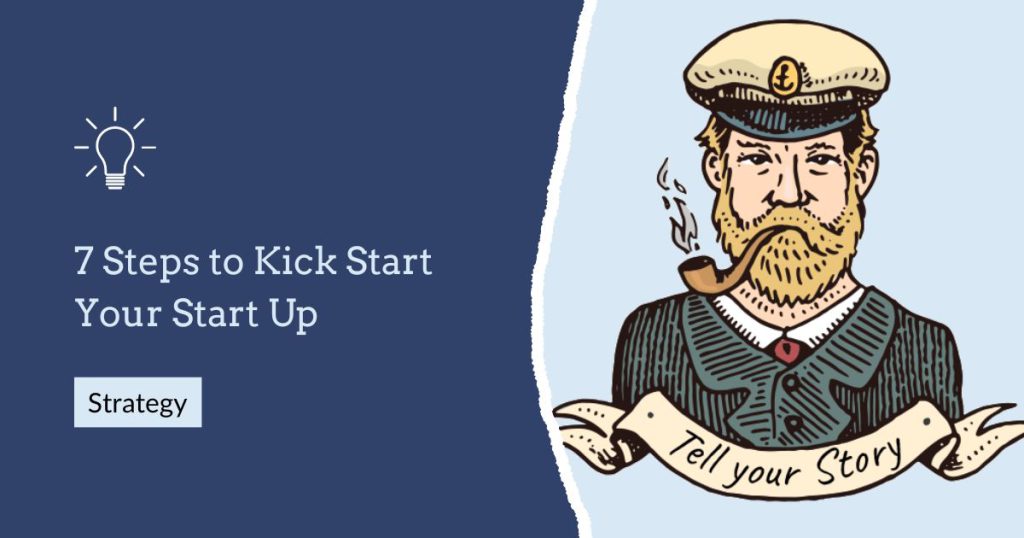So, you want to start a business?
Starting a business can be overwhelming. Having some clear steps can help you to get your business off the ground.
So, Let’s get your business started with these seven steps to kick start your startup.
1. Know the problem you’re solving.
The best and most successful startups solve a problem. Defining the problem your startup solves helps you communicate your message and show why your product is so important.
For example:
· Does your startup solve world hunger?
· Does your startup help young women find clothes that make them feel confident
· Is your product good for the environment?
· Does your service make the world more beautiful?
· Are you more affordable than other products on the market?
Chances are your startup solves a problem, even if you don’t think it does. Defining the issue you are solving helps you and any future employees believe in the company, but also it helps your potential customers believe in you.
2. Know Your Minimum Viable Audience
If you market to everyone, you market to no one. It’s a strange thing, but trying to target “everyone” is detrimental to your business. There are riches in the niches.
Finding and understanding a minimum viable audience as a startup is vital. It is much cheaper and easier to target one group and be incredibly relatable to them.
For example, if you make a healthier dog food product, marketing to everyone might seem more straightforward. Younger audiences are more likely to care about the nutritious value of pet food, making them much more likely to buy your product than an older dog owner. People respond to adverts that relate to them and seeing people who look like them living the life they want to live will capture attention. If you’re running online advertising, targeting a smaller audience with a more targeted message will give you a much better return on investment.
Once you’ve niched down, it’s time to research your audience. Join groups where your audience hangs out and look at how they talk about their problems. Use audience surveys to find out more about your audience. Invite people to chat to you on calls to find out more about their problems.
As you start to learn new things about your target customer, you can create a persona of your average customer to remind you who your customers are. You’re aiming to find their biggest struggles related to the industry you are in and their feelings around them.
3. Create a marketing statement
Once you’ve completed at least some user research, it’s time to create your marketing statement using A marketing statement helps you to define your “Who, What, and Why”. It enables you to stay on track to your goal and reminds you what your audience wants in a simple way.
I help _____(target market)________ solve ____(problem)____ by ___(solution)___. I help my customers by making them feel ___(Emotion)___. Success for these customers is ___(Success)___.
So, for example:
“I help young women solve their financial woes by showing them an easy-to-use dashboard with budget controls. I help my customers by making them feel in control. Success for these customers is less anxiety around money.”
Or
“I help teenagers solve their boredom by creating immersive games they can play with their friends. I help my customers by making them feel excited and engrossed in the game. Success for these customers is more quality time with friends.”
Note the phrasing like “easy-to-use”, “in control”, and “less anxiety”. These words should come straight from your user research. When creating your products, communities and campaigns, you should always go back to this marketing statement and make sure your offer aligns with your statement. This statement will evolve as your company grows, but you should never stray too far from your purpose.
4. Build a base
Your base is the primary place you want people to instantly go to when they want to find out things about you or your business. It is the place where you want to link back to in your campaigns, such as a website or email list.
One word of warning, though – Don’t build your house on rented ground.
You want to make sure that you own your base or have a way to quickly move it if the website turns against you or shuts down.
For example, many companies spent thousands to grow their Facebook page when the business pages first came out. In fact, Facebook used to prioritise them over human pages. Brands grew huge communities that allowed customers worldwide to connect with each other and the brand on a 1-to-1 basis. Facebook then announced they were changing the algorithm to put human pages first, forcing businesses to spend more money on advertising to continue the communities they had built.
The same has happened to YouTube, Instagram, Twitter.
Or, like those who managed to cultivate communities on Google+, the platform can get shut down entirely.
Bases such as Podcasts, email lists, self-hosted websites are usually your best bet for a base. You can still have groups, business social media pages and other channels, but make sure they all promote and push back to a place you own and control entirely.
Start creating valuable content around your industry that does one or a mixture of these things:
- Informs
- Educates
- Entertains
Building contenting allows you to establish yourself as an authority, and content is also fantastic for SEO.
5. Build a community
Once you have your base, it is time to get it out to your target audience.
But, there is a reason that this section is called “Building a Community” and not “Building an Audience”.
A community is far better than an audience. While an audience listens to your message, a community lives your message. They respond to your content, chat with other fans, share hints, tips and content around your product. Eventually, you will grow a group of “brand evangelists”, people who love and believe in your products so much they will tell everyone they meet so they can convert them to your brand. Brand Evangelists are the “holy grail” of marketing – social proof that your product is fantastic.
Start to share your content, ask questions and take on board what your new audience says. Encourage your audience to share photos and tips. Thank them for sharing, and ask if you can shout them out on your channels. Invite your audience onto your podcast or vlog.
You may need to use adverts to build a thriving community and scale your growth, but you can be conservative by growing organically.
6. Create your Minimum Viable Product (MVP)
So, by building a community, you can establish yourself as an authority figure and are gaining trust with the industry. Once you have that base, it’s time to start building your MVP.
If you need an investor to help build your MVP, you can show statistics from your community to show you are serious about your offer. You can show proof that they trust you as an authority figure and are active enough to buy. Ultimately, an investor is looking for a return on their investment and look for the best ideas that they believe will double, triple or 10x their initial investment as fast as possible. Having an established audience ready to buy is the perfect way to do this.
Remember, your MVP isn’t a finished product, it is the bare minimum you need to gain insights about how the audience uses the product and the future your product has. You can add features and clever algorithms later.
When creating your MVP, you need to think about your 7Ps of marketing:
- Product
- Place
- Price
- Promotion
- People
- Process
- Physical Evidence
Your 7Ps are the foundation of a good MVP and a carefully planned marketing strategy. Ensure you have a written down strategy for each part.
7. Create a solid launch plan
Once you have your MVP, it’s time to launch. But, just saying “hey, I have a thing” is not enough to engage your audience and get the money rolling in. What you need is a structured plan which maps out how you’re going to launch your product.
A launch plan contains three parts:
- Data Capture
- Intrigue
- Party!
Your launch strategy should look at capturing leads that you can email on the first launch day. You should build up intrigue with your audience and build mystery to encourage them to sign up. Then once you’ve launched, you need to keep the party rolling. Keep the excitement up and keep those purchases coming in.
Conclusion
And there you have it. Seven steps to kick start your startup. Our biggest piece of advice is to start now. Building a community takes time, and the bigger your community when you come to release your MVP, the better. If you need a helpful ear to get tips for launching your business, you can book a free, no-commitment call with our marketing team here:https://calendly.com/lennieandstan/consultancy-call

